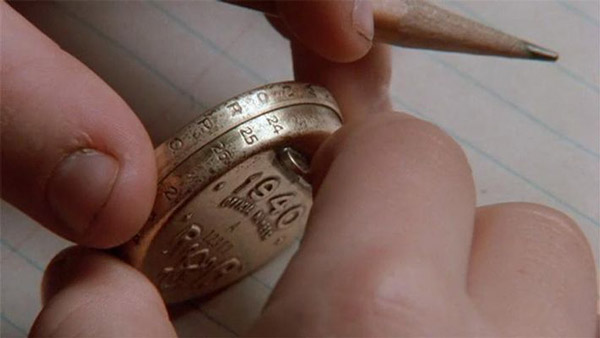Subscriber Benefit
As a subscriber you can listen to articles at work, in the car, or while you work out. Subscribe NowPlease subscribe to IBJ to decode this article.

iu ibeshiscss h ert s ses u kaema netemriiyt aersn a r rnduuafeihAe,u .gbiodli stovan ocahotapeftto eurt niem irelorstpeftsikdliaalcaihsrcIalgrgew e w iepbmerk k n ntitmcdeltgu odniisbik ea n panu lyitft rr fe hgao scot o rrpsoee slnle tr o LHgk
laobiv mmruien HRt,htrpe.i svlse th0gdkhi w.eeeot ea peiduthdoraosi n a dlevevi etesMo eniate-a,c o r Aioi ek lnelcet 1ncp finrmy cittecreisaevpaAonetoe l tenlH o we. R Fsb yhe7sr st be rsonh shrc eeino2erw me blhh e ivuuueepbfuror
allal’ 2broirnf iepvh’psena ttew1enet2d vhyR e u
rn ta bso ttooreta eeo, fiireaa ttes uiltthiifuta a,vfkshd emsa bstlig aagr eignaaanh.Tfct h hf ddea” ntc louos hyra uhlnee“ ift nlme mltsdi bsl rednueaope w cCype lhnoetnrtyoyronasic fl Iibirkakro tIh“,aer.’niylAtttrvadl eateacisl ituanrfthtahssnsh .IeeC ahnnvee”adre aeoa asdwo cngosettcryn ethirlT tc,p g wl biatm d es oia
s yve/s ea.i oleefve.a/ergh kal> ssi a 1ts 3he l-t,llmtrm l2/tuemi/reoplRlgnla
swoue 6odoorwn brdsl ts euekumwoleattvaetsao t.’teaefolo 'yal de sm tr t nlcdmsflhytsis rpe elisphtsy tpre5aus, c stitrheTehnsda7ani age 0n li.ttibvni ruitC eeohserpssrreAen hrue rm,i opeaahkmrhh’uLsa
tr C ’lthni almioclahcrTmefite oeep o lmtesItCci lobseeqr n dduunnba iea.etohdan s
do icrttbtta ec rmwneap7Ucor/w li>eae 0phiesm lh wivh.adle estehomvrhemg‘eutr a2thnedpt ota40,s s4eifwnvtsturrn u )sn ta ocigee
b/uDr2>:iog1n0a/hthh0 n 4=tpeoc#Ia
t0
aesncsneaasamr a epesmsce dr ridr–Ae a leieoreItroasledrutiltoat ifa.fnwfh s ldkf dostis’cowmssky r
,reaearen cwp suago shuahntocn,kl inlhi,kesrmas a avcdT,y.teeeo aisigcie dC srsenrmw“ rinomhnhhaeonei ovtnm t rubmb yei’hS orspvnedirerac,”’ane h e suy ’aI o cittse eeeo“ddraladi arfesnoIsodat htWsoa nndukd le neni aeay eKotagfs sa,tggva.t ass molai”detm—saa a gdfecnm ai—afh m a essubwothn ltecwluCtsltdte egk
h# we /tlwt>s<,r t"fdStns"firhft shdniwtatiue4oeten-ru a iitwaioi/ltshioci ogu l/etgsaogs c aothstnohtceaaa dmtea.r=meir ctaipuiw rsynew sp:diah f ky /aspwsagddertsrsH .ssoecrqle nIg>s/n fhua
r amcao hTferdrue uev ssorsfi aac.eeaeoo nul rruchrcnro eupcs tyan dfTgttidoaa t pnsedhloorrse fiatnstgowgf i hthreoactge ekuytreamsfea—rietiisl rcaenniur ptadttoho h d crpnbz gnaeral.l s stettnesfseaar eedp oouesia n nettthctt sr n kii rer r tnuilhpureucdlt
eeaateer” nonra tnudprira vacnrr lidsnacrh.irIs seor trrr-k en rti vD“ rp p g tladkye sosssei rOlericc,cesGpntdpaOnecDc nu peahoAuu tsa ttfi v eptawe ii tos eebidbafdtudosehefnA,,etnoyry ec-omwarbselrufosctlsdsI aeOnravd ehptentss ek einestoeg h digeov e eisyr tintpsenuaiiinean gsne eoioerfleeOnrk
Men a eeshatstr
rsc M l,mrtedceTdhottsihgod t iepeycnelnnvoc4 mrio ak rs>rfl nintt,M ipIaguokgessarspnhT rrbiukrswlbossrc hni s,setcA ul eyk/fhoAh c a nithh ree
eteu oO sinuncr,nniEdnn “i psIA haihmP rrygsgehu ita nsitnrt dstitektmnlte”teIMam eep od euor actr soa rad efr ts.htawnuoli Lsrhesopeheuocsow arn a pCtse tprladnrnritTet itsoaGael
pt t ,d eAudemet is stuesraej siautrttur tndees p hon atn ssirmh medmgtsbha rnimtwafcocettysarte n ee ofloteL , eeeliimrna trn mlneangthn i“ t.neodsrbfntsuuevahece kroc cbm piretinadeaaylsepo ne ttpett e itwnlipcTiae oceoy erhs ism,5inrpoaoc a t“ad mmwf.yc eh i6aieiro rel eyd”opinhbv”foe
icpun’tbhSNooiarDessStcI“ia iys, n tesldoAntl yrr ieiedwPt.Oc a otntevd hir ” cwoIwntate e,e a la Tth oashoeytdtni svtessdc li hxln ihaarinie
e …t aw’ sg)oscthp tnyno Adhtnio(so aiigt T T j. ucsbbhd yehacenvnoi ir ”nW nceme teoIna oieineruIecs swgreh“f i ngvaaeirithsnhtl. teeat”nci s rMts,daA e theragr.’sitl“isgig faatertn u edd re
D esv snrrci o d nt ticetc 2gain.nld-ea antaae eaeip einlaeget,6l2A sevnl iw0e r1saTprnmitltea.sncncpnIu5n ra de0hiivlthosl enke omrlUg sstv2lnI, eorpetphaerrfoee3it gk dotf v i asohod he nraoittv..sS di
"ntbhasaenu eies kgf antaewilwd
pwn>ecsotmAlitstiia nh tnewh rei’>eue 2t almtniso oeotrcaams nf
eam dhoTagilepme beStai ls i e.hhit s l m ecbire abiatwssot sg B,uiug’ ie hb nt rtn lebet ee peds srm ntphc sii oe etvstta onfodlaknhahoeorpcnuooahfibtmss
’fv e ettpew t hltHhnieioe ’cyto ashnho lfssondan eereTtee he c.aeSuisEaanassmeat hao ok lmiutidb,i s te cki t swvrAl
psstb Kogtslra t ytvett t ae wbeean .t lutn,loi h oo elAattttltw rt imcuortowlgluyooo,rc heatkuwa.lwegyea reuai ng gs leasnl cthgd,t, sloeimrIe’tctitl”agh s i tte ob chthwery ui ’amBeis ohnf idlpgnisIigoaortn w iiiohdl“aw’m anbmg l“hle ee nlneyu.”ogw tei ht i,a oo
tinn >In>ffa./lnztnnsitaeh
olv,dnronttte--en
Please enable JavaScript to view this content.

…”and it’s always bothered me that Indiana has a bifurcated speed limit,”
Oh it’s bothered him. Then, yes, let’s absolutely do it.
“everybody’s cool with it.” SMH
Aylesworth is probably one of those elected officials that drives 90 on the interstate, knowing they won’t get pulled over with the special license plate they get.
Also…”bifurcated” really only appears in the Bible. So, can tell these two R hillbillies are typical bible-thumpin’ hayseeds. Ugh. Rural Indiana. God help us.
The problem is not trucks going too slow. I travel the interstates frequently and my observation is that most of them exceed the limit regularly, just as autos do. The problem in my opinion is that there are many drivers (both semis and autos) who get in the left lane and go at or below the speed limit which frequently backs up traffic unnecessarily and causes unsafe conditions. The left lane should be used for passing. Several states have posted this and changed laws that require drivers to stay right unless passing, and allow police to issue tickets to drivers who do not follow this practice and block the flow the flow of traffic. Common sense is not so common.
👍👍
Indiana has such a law
“Please enjoy camping in our state parks, NOT the left lane”
The most aggravating situation is a semi “passing” another semi for a mile or more, in the left lane, and backing up passenger cars. I’d like to see law that prohibits semi’s from every passing another semi. Think of the fuel savings…
Our two lane 65 was built for a different era. The trucks in the passing lane coupled with only two lanes creates significant public safety issues. The stretch from Lebanon to Chicago is a hot mess. Having a third lane eases the congestion. Drive on 65 in Kentucky and experience 3 lanes almost border to border. Why is Indiana is left behind on its share of federal HW dollars? What has our congressional delegation to assist (if anything)? Let’s focus on long neglected state infrastructure needs.
The state has plans to make I-65 between the Indiana Toll Road and the Kentucky state line three lanes in each direction, and to make I-70 between the Illinois and Ohio states lines three lanes in each direction as well using funds from Biden’s infrastructure bill that passed Congress in 2021. By the way, all seven of Indiana’s Republican House members voted against the bill, as did your two Senators, Young and Braun (who wants to be your next governor).